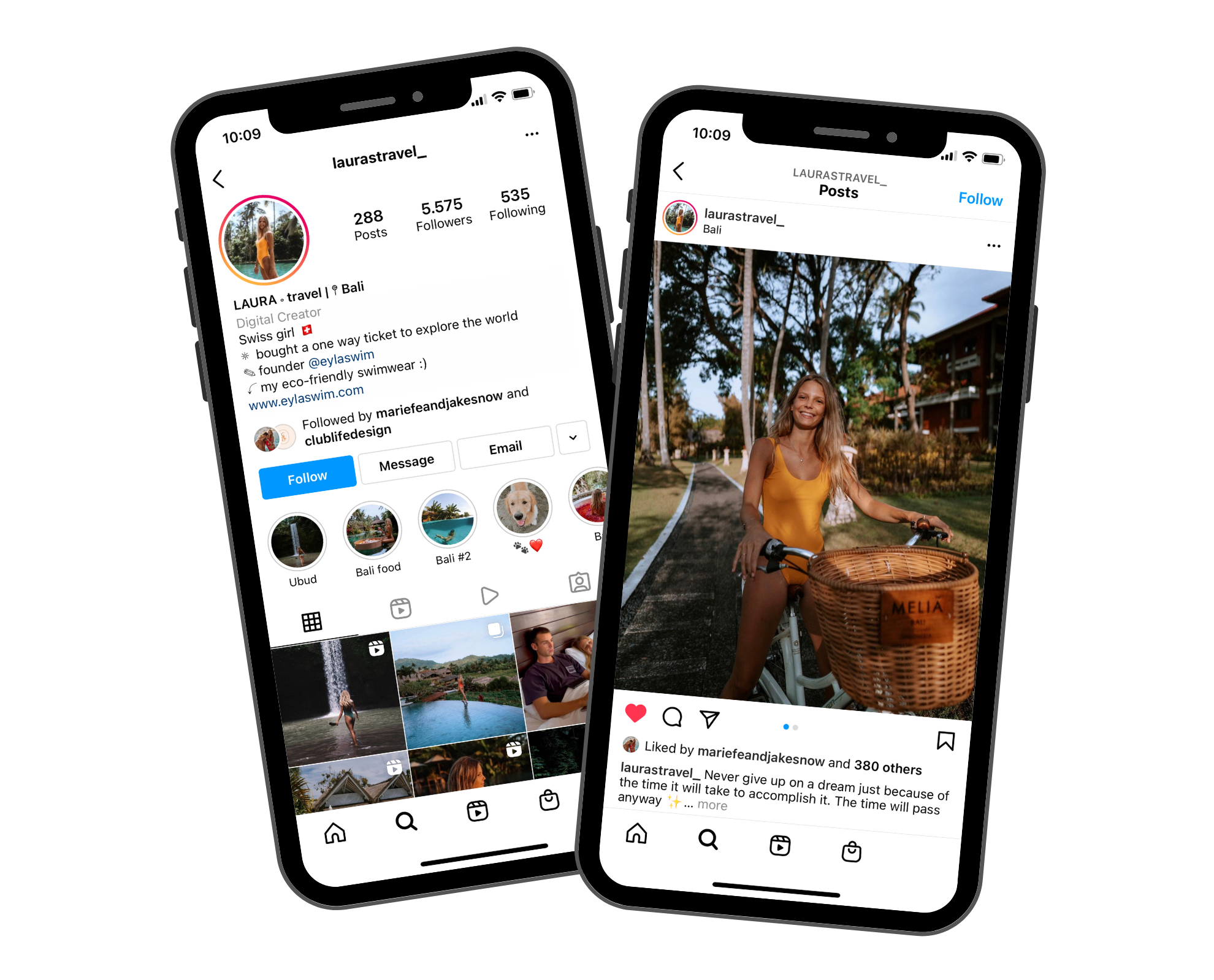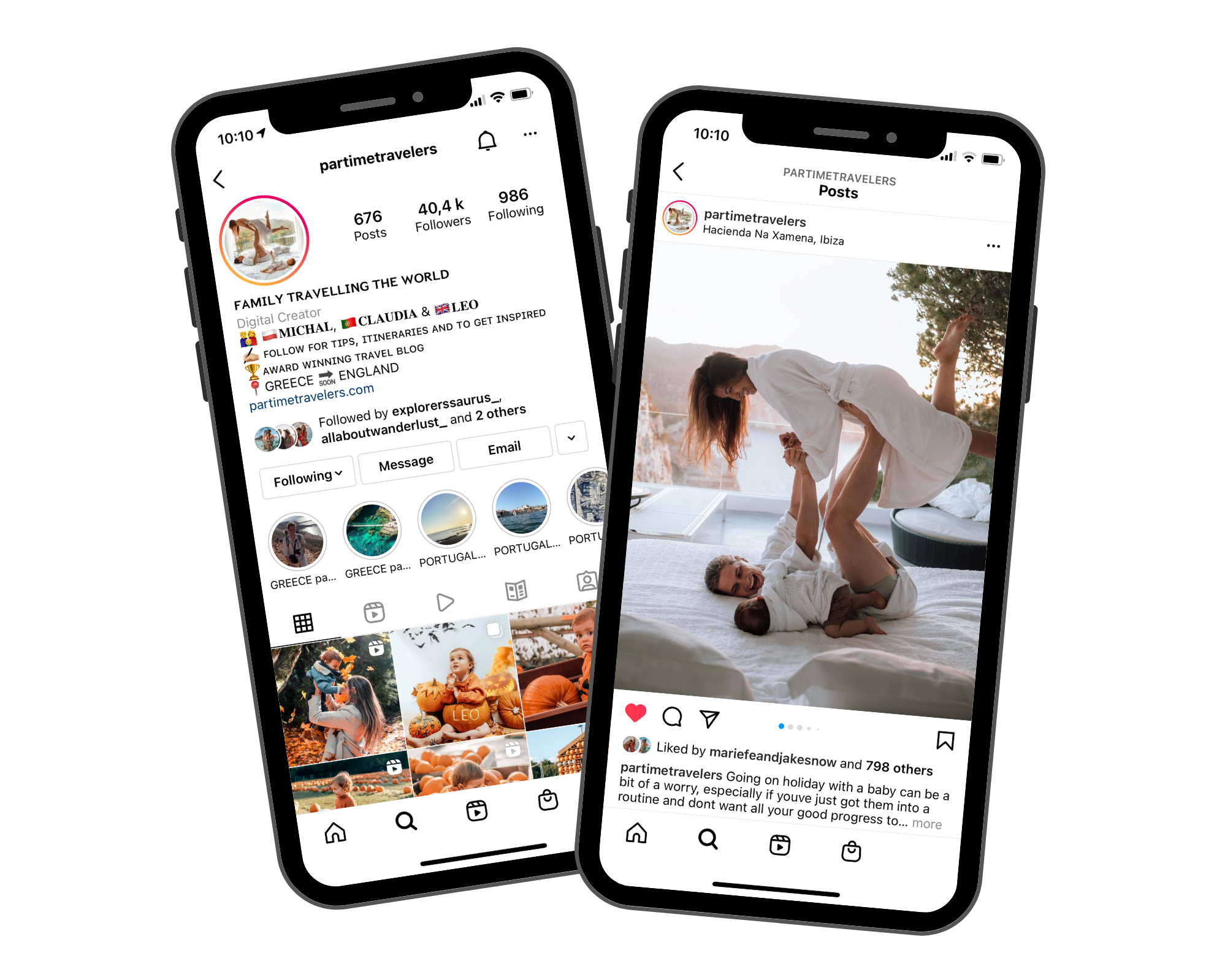
What are social media influencers?
If you have a brand and want to sell your product or service online, then you have probably thought about influencer marketing. By now, we're sure that you’re familiar with its power and what it could mean for your brand or business's growth. In today's digital world, social media content creators with niche audiences can offer huge value to your brand as they have access and influence to your potential perfect market.
Influencer marketing has become one of the most successful ways for a brand to reach a relevant audience while increasing sales and engagement.
This strategy isn’t limited to small business owners - big brands and hotels capitalize on it too as they see just how powerful social media can be. With the influencer marketing industry continuing to rise in popularity, it’s no wonder that it’s taking over traditional methods of marketing and advertising. As a matter of fact, the influencer marketing industry is set to become worth more than $15 billion by 2022 - can you believe that!?
But how do you know which influencer you should reach out to? You obviously don’t want to work with just anyone. They have to suit your brand, match your values and most importantly have followers that would be interested in your product or service.
Now you might be thinking, "why not just work with the influencer that has the most followers?" Well, in order to answer that question you will have to first identify your marketing objective. Are you working with an influencer to bring the greatest amount of awareness to your brand, or is your goal to boost your product sales? While an influencer with a larger following can help you reach more people by numbers, working with multiple smaller influencers can allow you to drive more sales.
So if you are looking to dive into the lucrative world of influencer marketing, the first step is to learn which type of influencer works best for your brand. And in order to do so, you’ll have to understand the different types of influencers, so let’s jump in and take a look at them.

What are nano influencers?
Let’s start with the smaller accounts - the so called nano influencers. They have between 1’000 and 10’000 followers but despite their low follower count, they can be incredibly powerful. Nano influencers often have higher levels of engagement as they have the time and capacity to communicate and engage with their audiences on a regular basis (a good engagement rate for a nano influencer would be 10% - 12%). Being seen as “a friend”, they have a really tight bond to their community.
The great thing about nano influencers is that while, yes, their reach is low, their influence among a small but tight-knit community of people is pretty high. And that level of intimacy could be a huge benefit for your brand since they are more authentic and more accessible, so their followers are more likely to trust them.
Nano influencers are especially great for start-ups or small businesses that want to leverage influencers, but have a very small marketing budget. They’re also great if you want to drive up your conversions, or if you want to promote a local event for example. Nano influencers are a great way to build buzz and generate positive word-of-mouth among the local community.
The only thing you should look out for is the quality of their content and their reliability. Remember, collaborations and partnerships are not on their daily to-dos. It might even be their first one, so make sure to set clear expectations and deliverables.
A great example for a nano influencer is our student @laurastravel_ who just created her own eco-friendly swimwear brand:

What are micro influencers?
Onto the next category: micro influencers, they have between 10’000 and 50’000 followers. Similarly to a nano influencer, many people see micro influencers as friends and therefore, take their advice, suggestions, and recommendations rather seriously. Most times they have a solid relationship with their audience based on trust, friendship and honesty, which is why they are able to authentically influence purchasing decisions.
Many micro influencers are specialists in a particular niche, so any content they share that’s related to that niche is considered more credible. If you're a brand or business looking to reach a specific audience, identifying micro influencers in that industry helps reach your exact target demographic.
With an engaged audience, these social media influencers are more likely to generate qualified leads and conversions. If your target market is a match with the micro influencers’, it could definitely be a partnership worth exploring (a good engagement rate for a micro influencer would be 8% - 10%).
Take a look at out micro influencer students @partimetravelers who are rocking it with hotel collaborations:

What are mid-tier influencers?
Mid-tier influencers is a relatively new term, and a lot of people just go from micro to macro influencers but that is a rather big gap. With a follower count of between 50’000 to 500’000, mid-tier or midi influencers are certainly a powerful tool within influencer marketing.
They have access to a significantly larger audience, but still have pretty reasonable prices so they won’t cost you an arm and a leg. Mid-tier influencers are especially great for brands that are seeking to promote a new product or service, as they often come with great conversion rates, high engagement, and the ability to drive purchasing decisions among followers and potential customers.
Combining the traits of both micro and macro influencers, mid-tier influencers keep a closer connection to their followers whilst having access to a much wider audience (a good engagement rate for a mid-tier influencer would be 5% - 8%).
And here you have two great examples of our different mid-tier influencer students - @bohoandsalty and @allaboutwanderlust_:

What are macro influencers?
With a following of between 500’000 and 1 million, we have the macro influencers. With access to potential consumers from all around the world and the ability to reach thousands of people at once these influencers can hold a great power in your marketing strategy.
Even though their engagement rates may be slightly lower (a good engagement rate for a macro influencer would be around 2%) and they may have a more distant relationship with their followers in comparison to nano, micro, and mid-tier influencers, they can still have a huge impact on their audience. The noise and awareness they can create for your brand can also result in an impressive return on investment. They know their target audience inside and out. They’ve spent years understanding what they like, and what they don’t. Because of this, their priority is maintaining that strong connection with their followers.
If you decide to work with a macro influencer, be ready to pay a higher price because their reach isn’t free. Additionally, you should make sure that they don’t advertise too many brands at the same time because their followers will lose their trust and you’ll be “just another brand” getting promoted. Finding the right macro influencer can be a bit tricky, but once you find someone you enjoy working with and you see great results with, you might even consider a long term partnership with them and make them become your ambassador!
What are mega influencers?
Lastly we have mega influencers, accounts that have more than 1 million followers. Whilst they usually come with a large price tag, mega influencers have the ability to reach an audience that is often far out of a brand’s reach. With only one post, your brand can be brought in front of hundreds and thousands of new eyes.
Making quite the impact, mega influencers are obviously a great way to generate sales and boost awareness for a brand, its products, and its services, however since their engagement right is usually much lower (a good engagement rate for a mega influencer would also be around 2%) you might expect more than you actually end up getting - of course that also depends on each influencer and their community which cannot be generalized.
Working with such big influencers as a small business can be very hard and may be unrealistic solely because of their prices and also because of their limited time. Even though we personally love to support small businesses and startups, other big influencers prefer to work with big brands and on long term bases.
As you can see, there are a few things to consider before working with social media influencers – and this starts by understanding the different types you could work with, and how to reach out to them. We suggest starting with smaller accounts - you will see that even though they might have less followers, they can do your brand a world of good and you’d be surprised how big of an impact they can have.
To get the best out of an influencer partnership, make sure to be clear on your campaign goals, draw up a shortlist of potential social media influencers, and then carefully research the kinds of collaborations they’ve done in the past. If you want to learn more about working with other creators and brands you might be interested in our blog post: The different types of collaborations
See you around!











